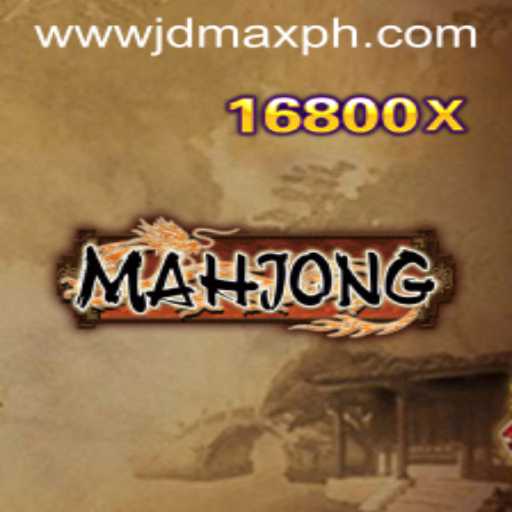Unveiling the Timeless Game of Mahjong
The game of Mahjong has intrigued players for centuries with its mix of skill, strategy, and chance. Although its origins are deeply rooted in ancient Chinese culture, Mahjong has evolved over time and spread across the globe, captivating millions with its intricate tile patterns and multifaceted gameplay. With the rise of digital platforms, new iterations and adaptations have emerged, one of which is captured in the enigmatic term JDMAX.
The Origins and Evolution of Mahjong
Mahjong is believed to have originated during the Qing dynasty in China, with various stories and legends attributing its invention to diverse influential figures. The game consists of 144 tiles based on Chinese characters and symbols. Despite its traditional roots, Mahjong has seen widespread diversification, spreading to countries such as Japan, the United States, and Europe, each region adapting it to suit their cultural nuances.
In China, the game is viewed as a social activity, often played during gatherings and festivals. As it traveled west, Mahjong found its way into American homes in the early 20th century, where it was embraced with burgeoning enthusiasm, leading to the development of the American style—a version with an official league and yearly rule changes.
Understanding the Basics of Mahjong Play
The game can be played by four individuals, each tasked with drawing and discarding tiles to form a winning hand. The primary objective is to assemble four sets of three tiles known as melds, and one pair. Melds can be formed in various ways: a Pung (three identical tiles), a Chow (three consecutive tiles of the same suit), or a Kong (four identical tiles).
Players roll dice to determine who sits at the dealer's position, known as the 'East Wind.' The dealer draws the first tile, setting the pace of the game. The excitement in Mahjong arises from the simultaneous strategies of building one's hand while obstructing opponents' attempts to complete theirs.
The Role of Strategy in Mahjong
Strategizing in Mahjong requires careful observation and decision-making prowess. Players must pay attention to which tiles are discarded and which melds are declared by competitors. Understanding the distribution of unseen tiles is crucial to predicting opponents' moves and devising counter-strategies. Expert players often memorize the tiles that have been played to deduce potential winning hands of their opponents.
The skill of skillful discarding cannot be overstated—avoiding discarding tiles that could complete an opponent's hand is essential. Players must also hone the timing of claiming discarded tiles. Balancing between offensive and defensive strategies can make the difference between a triumphant win and an unexpected loss.
Exploring the Digital Age of Mahjong with JDMAX
With the advent of online gaming, Mahjong has undergone a digital transformation allowing for a new set of dynamics and platforms. The term JDMAX refers to a contemporary online environment where Mahjong enthusiasts can engage in games embedded with cutting-edge graphics and interactive interfaces. This virtual Mahjong sphere offers new players a gateway to learn and immerse themselves in the game without geographical constraints.
JDMAX features variations catering to both traditionalists and modern gamers. Online platforms have integrated tutorials, virtual tournaments, and social interaction components where players can connect with a global community. The digital arena has also seen advancements through artificial intelligence, offering different levels of challenge and enhancing the learning curve for newcomers.
Moreover, JDMAX promotes access to a multitude of Mahjong iterations, allowing players to experiment with styles from different cultural backgrounds. Whether it's the speedy Japanese Riichi Mahjong or the tactical European version, players have the opportunity to diversify their experience within this expansive digital ecosystem.
The Cultural and Social Impact of Mahjong
Beyond gameplay, Mahjong has sustained its cultural relevance by bringing people together, fostering community, and serving as a cognitive exercise. In many societies, Mahjong gatherings are a cherished tradition, providing a sense of connection across generations. As a mental rigor activity, Mahjong is often praised for its benefits in maintaining and enhancing cognitive flexibility among elderly players.
In Japan, trendy Mahjong parlors called 'jansou' offer not only competition but also social interaction, contributing to the game's renewed popularity. Meanwhile, online platforms like JDMAX have expanded these interactions to an international audience, blending tradition with modernity.
Mahjong also intersects with popular media, such as movies and animations, amplifying its reach and capturing the imaginations of diverse audiences. Its depiction ranges from showcasing intense strategic duels to highlighting its cultural significance within family dynamics.
Future Prospects of Mahjong and Digital Ventures
While the essence of Mahjong remains rooted in tradition, platforms such as JDMAX ensure its adaptation and survival in the digital era. These platforms continuously evolve, integrating advanced analytics, cross-platform play, and immersive experiences to engage younger tech-savvy players.
The digital realm opens new doors for innovation, such as augmented reality experiences, allowing players to enjoy lifelike engagements regardless of their location. This hybridization portends a promising future for Mahjong, blending time-honored practices with technological advancements.
As Mahjong continues to captivate new generations, JDMAX stands as a testament to the resilience and adaptability of this beloved game, offering players an enriched and global gaming experience.








